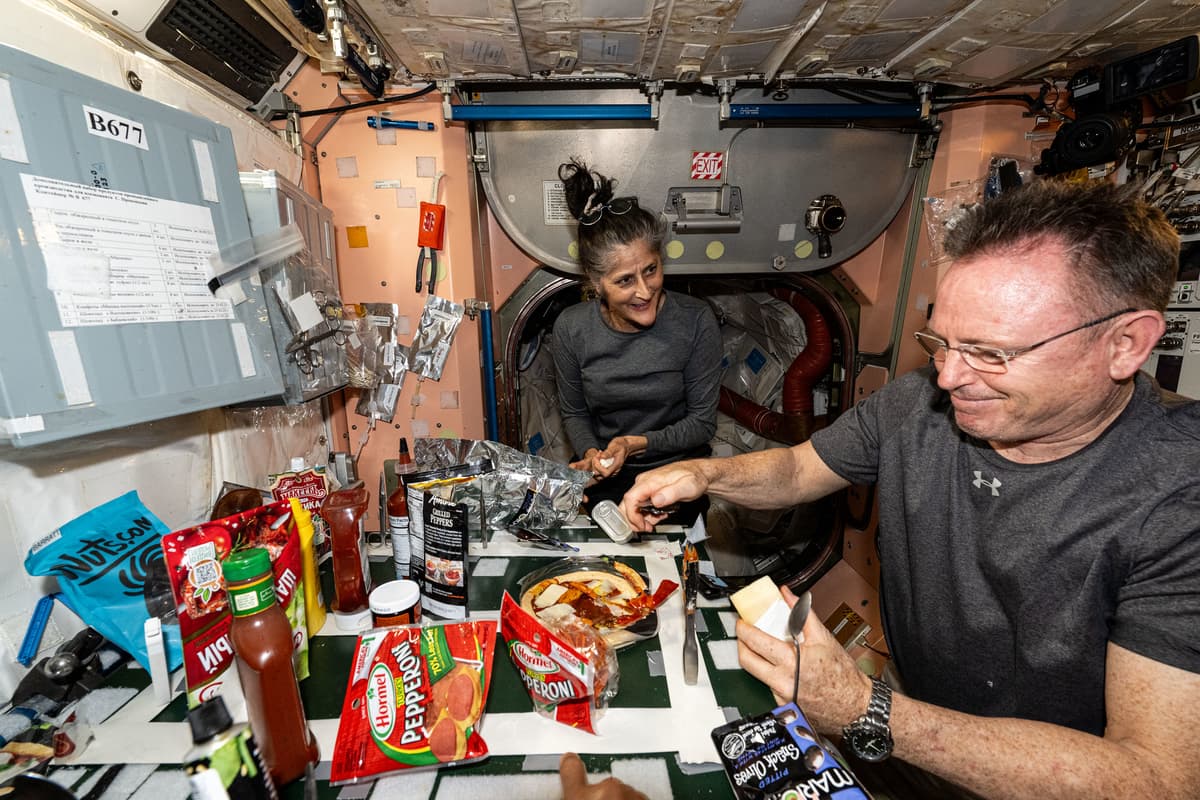Stranded NASA Astronaut Suni Williams Opens Up About Unexpectedly Long Stay in Space
The astronaut appeared to be in good health and spirits following photos of her that recently sparked health scare rumors.

Like “running a marathon, and not a sprint” is how a NASA astronaut whose days-long journey unexpectedly turned into a months-long one is describing her extended stay in space, with months to go before her return to Earth.
Ms. Williams, one of two astronauts who was left behind at the International Space Station by a malfunctioning spacecraft earlier this year, appeared to be in high spirits during a space-to-Earth call on Thursday despite recent reports that she had lost weight, prompting a health scare.
“We planned on coming up here for about, you know, eight to ten days, but we really thought it was going to be a couple of weeks,” she said on Thursday while noting that it was a test flight. “The idea of staying for eight months was not really on the top of my mind when we initially signed up for this flight.”
Ms. Williams, along with another NASA astronaut, Butch Wilmore, departed from Earth in early June for the trip, but the stay was extended after Boeing’s Starliner, which brought them to the space station, experienced malfunctioning thrusters and helium leaks. Due to safety concerns, the Starliner was returned to Earth without a crew, leaving Ms. Williams and Mr. Wilmore in space until a SpaceX vehicle is set to bring them back in February 2025.
Fortunately, Ms. Williams had already been on the space station twice for long-duration flights and had extensive training allowing her to adapt, she said on the Thursday call, which was held with the JEKL Institute for students to ask questions about space. Another astronaut aboard the space station, Nick Hague, joined Ms. Williams on the call.
Once Ms. Williams realized her stay would be extended, “the mindset changes,” she elaborated. “You’re like, ‘Okay, now I’m here for a while, so I got to settle in. I got to find all my clothes, find my food, make myself at home, and maybe slow down the pace a little bit so I know that I’m running a marathon, and not a sprint anymore,” she said.
Since this isn’t her first space flight, she said it was much easier to adapt to daily tasks like moving around the spacecraft, eating, and sleeping.
“My brain just went, ‘Hey, you’ve been here before, you’re fine,’” she said. “And I adapted right away, and to the point that it’s easy to fly around, it’s easy to prepare meals, it’s easy to do those natural things like go to the bathroom because you’ve done it before, so I think it’s just a testament to the human body that it is able to adapt so well and remember things even after a number of years.”
Ms. Williams recently garnered headlines in several news outlets after NASA released photos that sparked concerns about her health and body weight after staying in space for months. “Jarringly gaunt” and “remarkably hollow-cheeked” is how the New York Post described her appearance.
“She has lost a lot of weight,” the Post reported, citing an unnamed NASA employee that it said was “directly involved” in the mission. “The pounds have melted off her and she’s now skin and bones. So it’s a priority to help her stabilize the weight loss and hopefully reverse it.”
“Her cheeks appear a bit sunken — and usually it happens when you’ve had sort of total body weight loss,” one physician, Dr. Vinay Gupta, told the Daily Mail when speaking about Ms. Williams’ recent appearance. He said that while he didn’t think her life was “in danger,” that “I don’t think you can look at that photo and say she has sort of healthy body weight.”
Ms. Williams this week dismissed those concerns as “rumors,” saying that her body has “changed a little bit, but I weigh the same.”
“I’m the same weight that I was when I got up here,” she said in an interview with the New England Sports Network, noting that things “shift around” in space.
“You’ve probably heard of a fluid shift, where folks in space, their heads look a little bit bigger because the fluid evens out along the body,” she said, adding that she and Mr. Wilmore have been working out on a bike, treadmill, and lifting.
“Weightlifting, which is not something I do all of the time, has definitely changed me,” she said. “My thighs are a little bit bigger, my butt is a little bit bigger, we do a lot of squats.”
NASA, for its part, has insisted that all astronauts aboard the space station are “in good health.”
“It’s unfortunate that rumors persist otherwise,” the chief health and medical officer at NASA’s headquarters at Washington, D.C., Dr. J.D Polk, said in a statement provided to the Sun. “NASA and our partners have safely conducted long-duration missions aboard the orbital laboratory for decades, studying the effects of space on the human body as we prepare for exploration farther into the solar system. Crew health is regularly monitored by dedicated flight surgeons on Earth, and they have an individual diet and fitness regime to ensure they remain healthy throughout their expeditions.”

